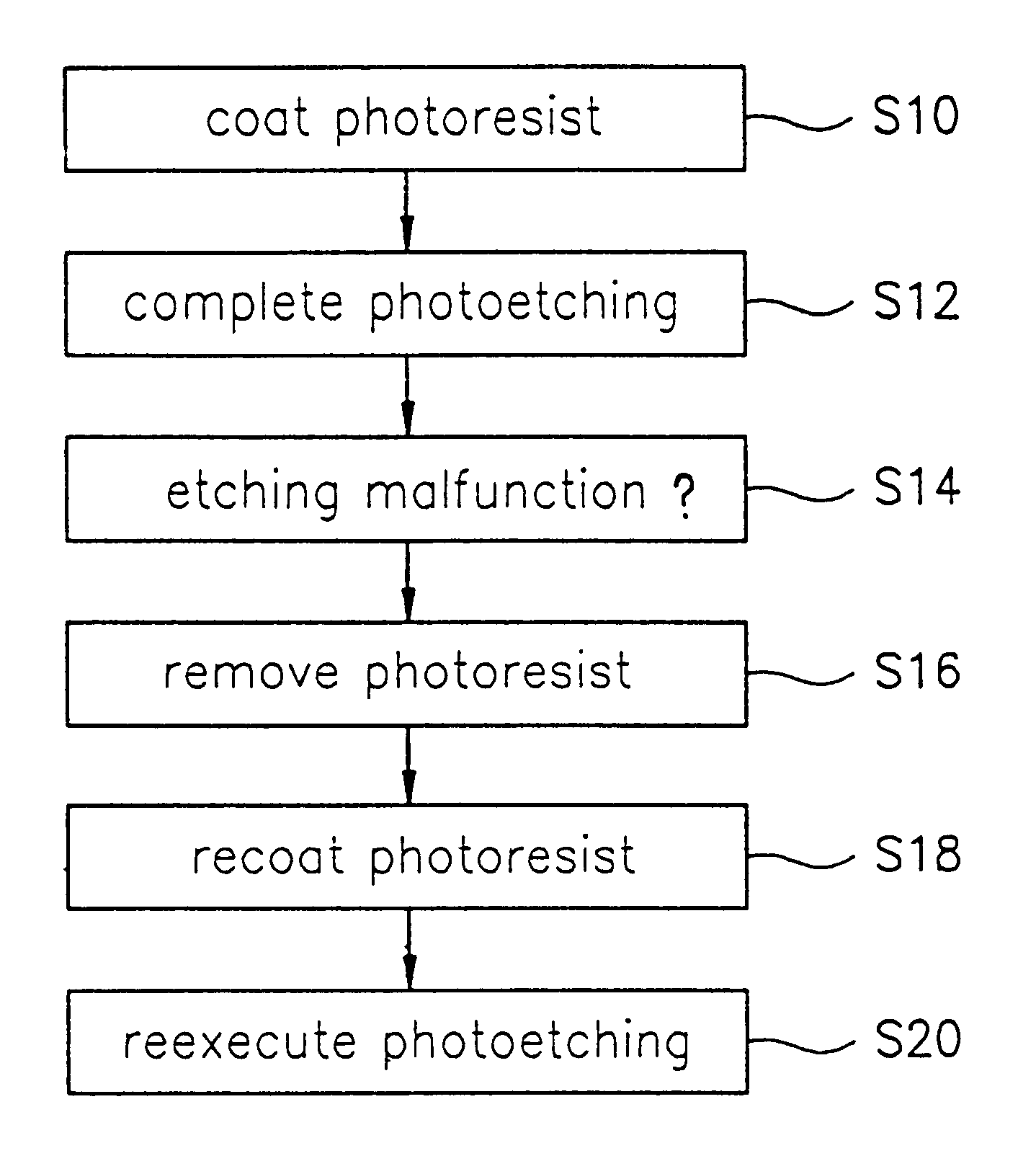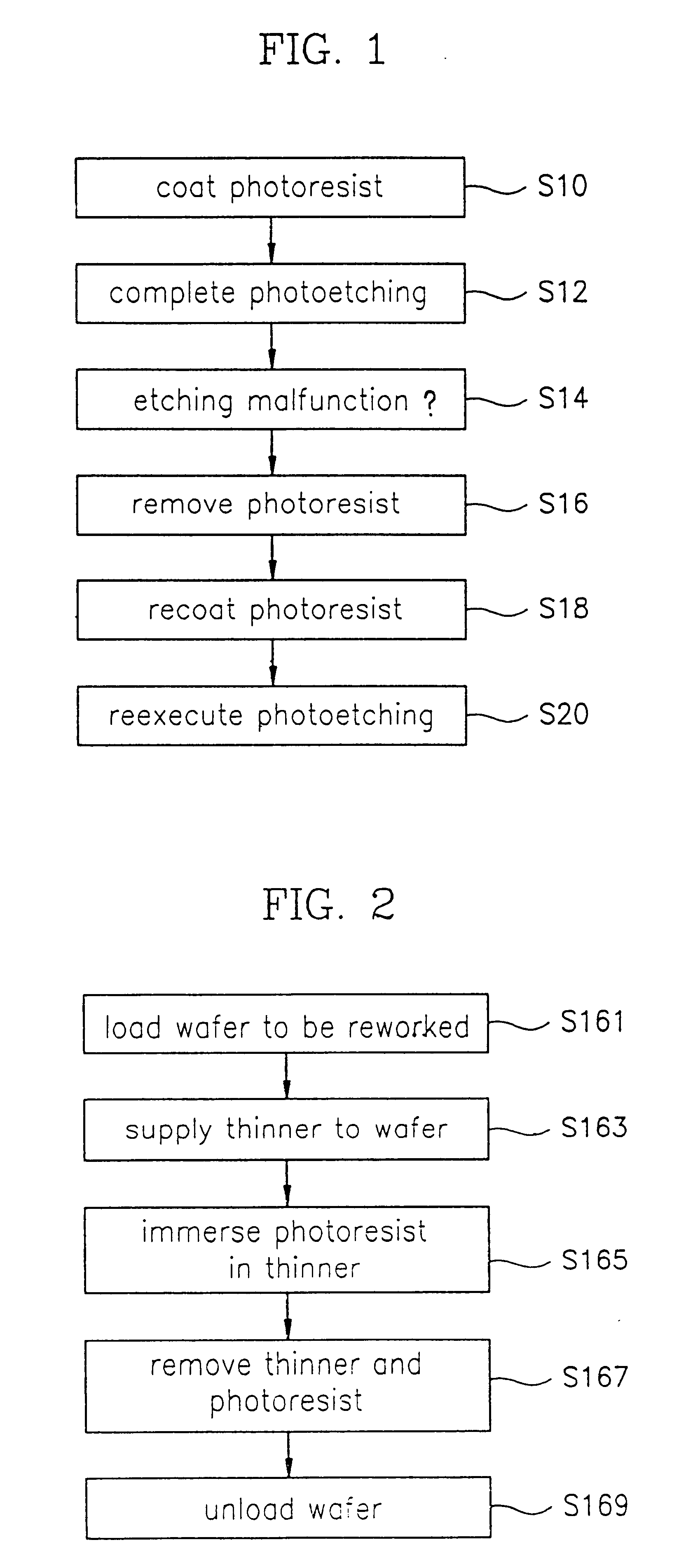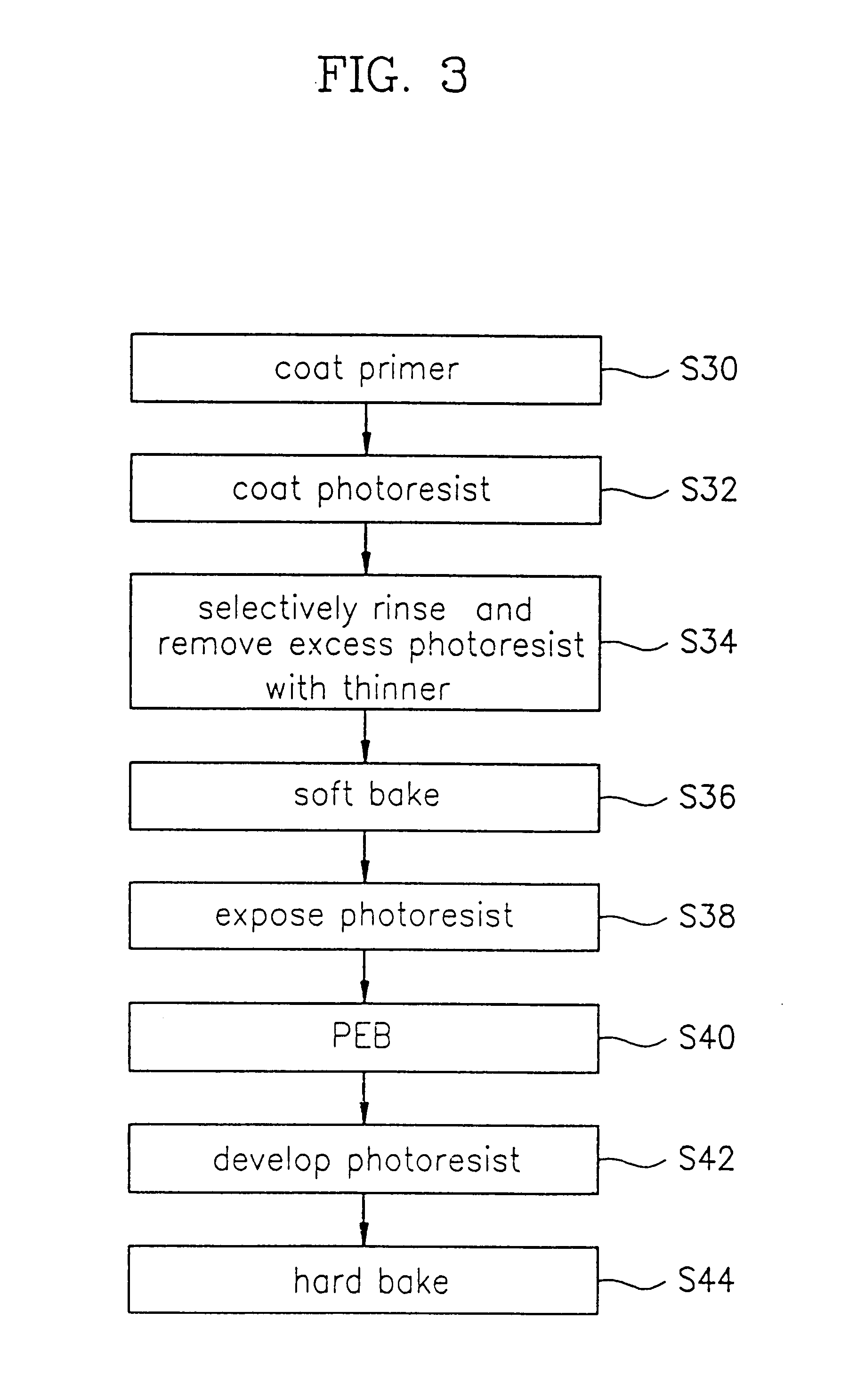Thinner composition and methods and systems for using the thinner composition
a composition and thin technology, applied in the field of thin compositions, can solve the problems of reducing productivity, affecting the production efficiency of electronic devices, and affecting the quality of thin compositions,
- Summary
- Abstract
- Description
- Claims
- Application Information
AI Technical Summary
Problems solved by technology
Method used
Image
Examples
Embodiment Construction
The conventional thinner methyl isobutyl ketone (MIBK) was compared to the thinners contemplated by the present invention. The solubility rate and the volatility of each were measured in the same manner as in the "Embodiments 1 to 12" section. The results are shown in Table 1. Note that while the specific volatility rates for Comp. Ex. 2 and Comp. Ex. 3 are not identified in Table 1, the volatility rates for EA and MMP are higher than nBA, the ratio generally being on the order of nBA:EA:MMP=1:5:3.
As shown in the Table 1, and as compared with the conventional methyl isobutyl ketone (MIBK), the thinner composition comprising a mixture of n-butyl acetate (n-BA) and ethyl acetate (EA) by mixing ratio of (8 to 9):(2 to 1), or a mixture of n-butyl acetate (n-BA) and methyl methoxy propionate (MMP) by mixing ratio of (7 to 8):(3 to 2), or a mixture of n-butyl acetate (n-BA) and methyl ethyl ketone (MEK) by mixing ratio of (8 to 9):(2 to 1) shows a solubility rate similar to that of the me...
PUM
| Property | Measurement | Unit |
|---|---|---|
| temperature | aaaaa | aaaaa |
| thickness | aaaaa | aaaaa |
| diameter | aaaaa | aaaaa |
Abstract
Description
Claims
Application Information
 Login to View More
Login to View More - R&D
- Intellectual Property
- Life Sciences
- Materials
- Tech Scout
- Unparalleled Data Quality
- Higher Quality Content
- 60% Fewer Hallucinations
Browse by: Latest US Patents, China's latest patents, Technical Efficacy Thesaurus, Application Domain, Technology Topic, Popular Technical Reports.
© 2025 PatSnap. All rights reserved.Legal|Privacy policy|Modern Slavery Act Transparency Statement|Sitemap|About US| Contact US: help@patsnap.com



